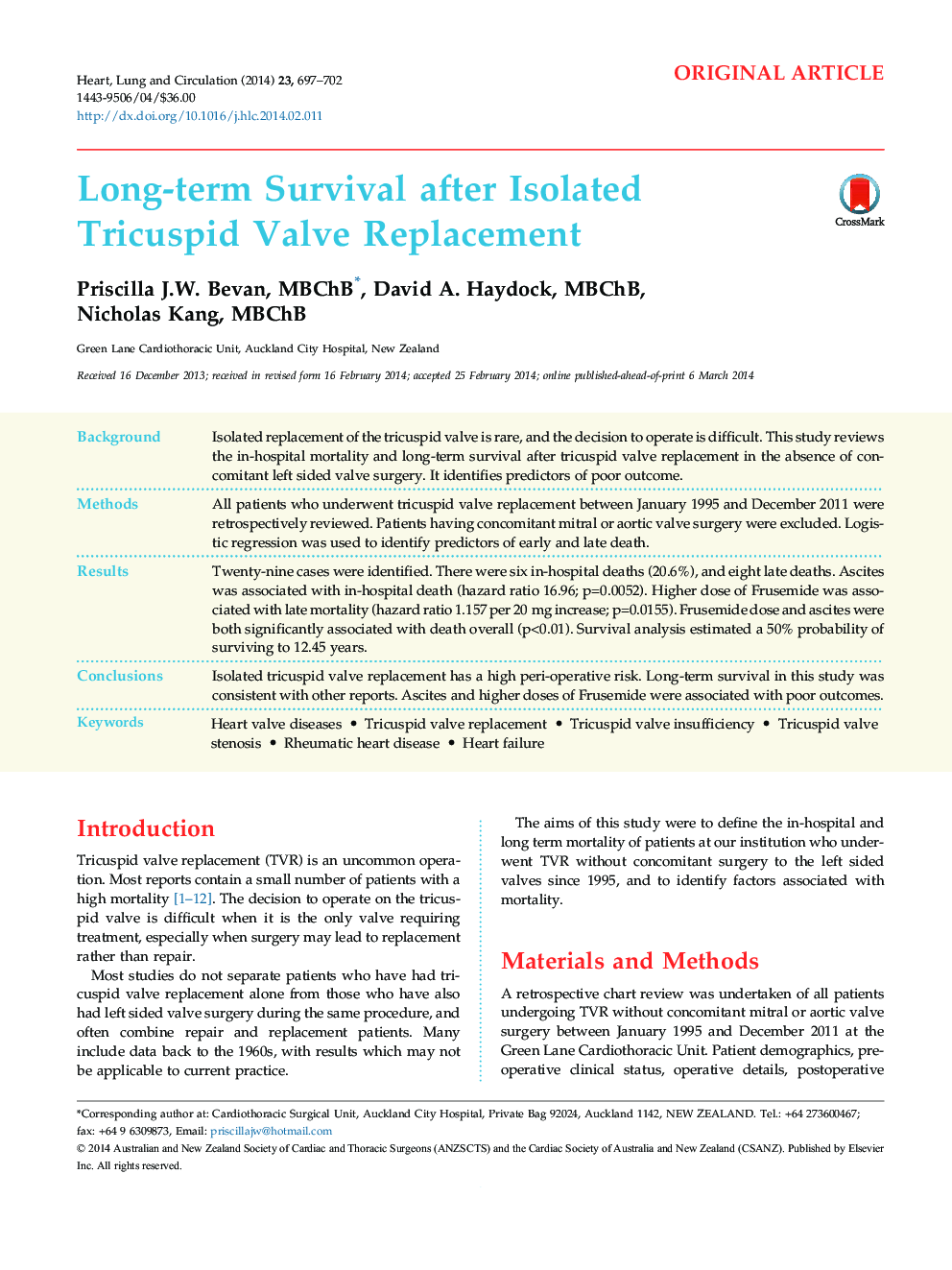| Article ID | Journal | Published Year | Pages | File Type |
|---|---|---|---|---|
| 2917739 | Heart, Lung and Circulation | 2014 | 6 Pages |
BackgroundIsolated replacement of the tricuspid valve is rare, and the decision to operate is difficult. This study reviews the in-hospital mortality and long-term survival after tricuspid valve replacement in the absence of concomitant left sided valve surgery. It identifies predictors of poor outcome.MethodsAll patients who underwent tricuspid valve replacement between January 1995 and December 2011 were retrospectively reviewed. Patients having concomitant mitral or aortic valve surgery were excluded. Logistic regression was used to identify predictors of early and late death.ResultsTwenty-nine cases were identified. There were six in-hospital deaths (20.6%), and eight late deaths. Ascites was associated with in-hospital death (hazard ratio 16.96; p=0.0052). Higher dose of Frusemide was associated with late mortality (hazard ratio 1.157 per 20 mg increase; p=0.0155). Frusemide dose and ascites were both significantly associated with death overall (p<0.01). Survival analysis estimated a 50% probability of surviving to 12.45 years.ConclusionsIsolated tricuspid valve replacement has a high peri-operative risk. Long-term survival in this study was consistent with other reports. Ascites and higher doses of Frusemide were associated with poor outcomes.
